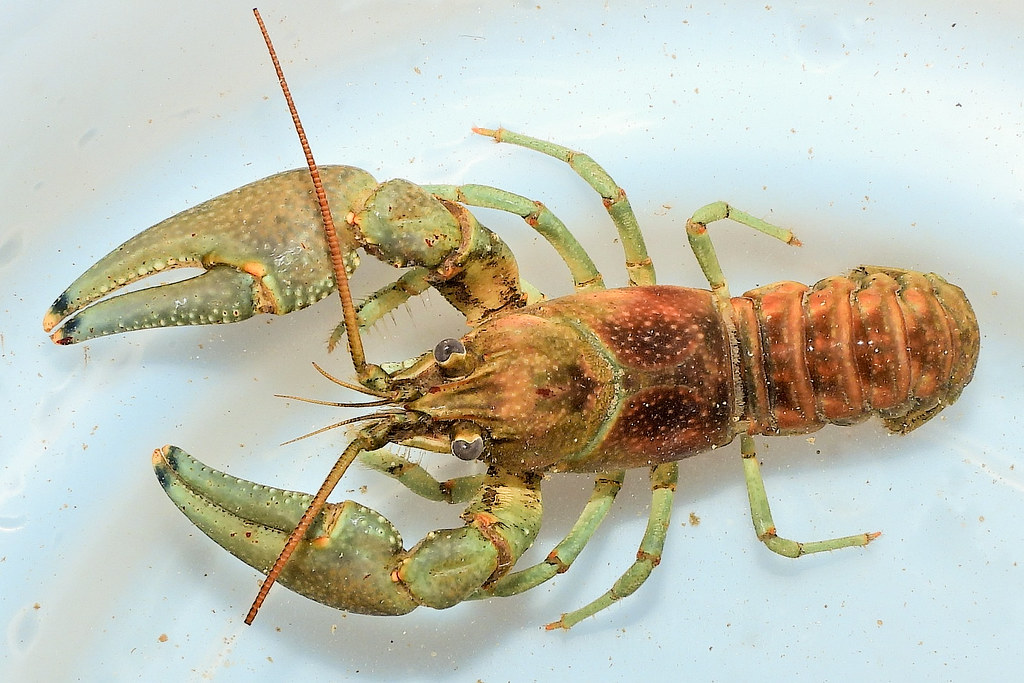Rusty Crayfish
Faxonius rusticus
The rusty crayfish is an invasive species that can be found in some rivers and streams in Maryland, New York, Pennsylvania, Virginia and West Virginia. It has a spot on either side of its back that is rusty in color.
This section shows one large critter image at a time. Use the thumbnails that follow to select a specific image to display here.

This gallery contains a grid of small thumbnails. Selecting a thumbnail will change the main image in the preceding section.
Appearance
Rusty crayfish have large, robust claws which are grayish-green to reddish-brown in color. They also have a black band at the tip of their claws. On either side of their backs, they have a dark, rusty spot, about where you would grab them to pick them up.
Feeding
Rusty crayfish are opportunistic feeders. They will eat almost anything, including: aquatic plants; bottom-feeding invertebrates such as aquatic insects, snails, leeches and clams; detritus, which is decaying plants and animals; fish eggs; and small fish. They impact the abundance and diversity of aquatic plants by destroying the plants they feed on.
Reproduction and life cycle
Rusty crayfish can mate in late summer, early fall or early spring, but the female will store sperm until her eggs are ready to be fertilized, which is typically in late April or May. Females carry fertilized eggs on the underside of their tail section (called the “swimmeret,” actually part of the abdomen). Just before they lay their eggs, white patches appear on the underside of females’ tails. They lay anywhere between 80 and 575 eggs.
Eggs hatch after three to six weeks, depending on the water temperature. Young cling to female’s swimmerets for three to four molts—when they shed their old shell to grow—and may stay with her for several weeks for protection. They reach maturity once they’ve molted eight to ten times, and they are about one and three-eights inches in length, although they can grow to be up to four inches. Rusty crayfish tend to live for three or four years.
Once they reach maturity, males molt twice a year while females molt once after releasing their young. Since males molt twice, they are larger than females of the same age. In the spring, males will molt into a non-reproductive form and in the summer, they will molt back into a reproductive form. The reproductive form has large claws and a hook on one pair of their legs.
Did you know?
- Since female rusty crayfish carry around sperm before fertilizing their eggs, then carry their eggs on their tail sections, one female brought to a new location could start an infestation.
- Rusty crayfish are an aggressive species and can often displace native crayfish species.
- Because removing invasive crayfish would harm other, native species, prevention is the only effective way to stop their spread. The Maryland Department of Natural Resources recommends never moving caught crayfish from one waterbody to another and either disposing of unused bait humanely or saving it for future use.
Sources and additional information
- Animal Diversity Web – University of Michigan Museum of Zoology
- Nonindigenous Aquatic Species – U.S. Geological Survey
- Rusty Crayfish – Pennsylvania Sea Grant
- Rusty Crayfish (Orconectes rusticus) – Wisconsin Department of Natural Resources
